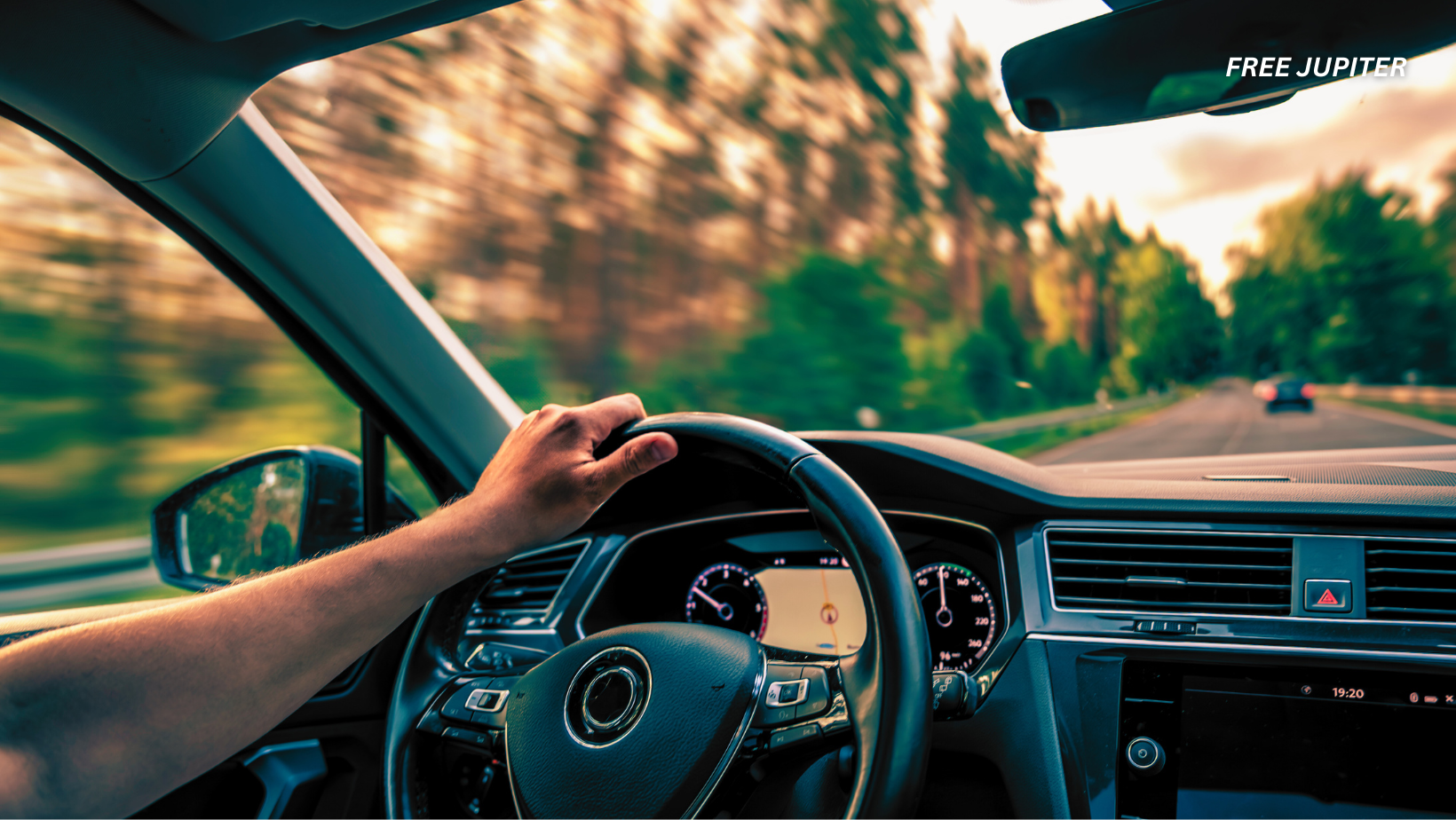It’s often said that how a person drives says a lot about who they are. While most see driving as a practical task—a means of getting from one point to another—licensed therapist Jeffrey Meltzer suggests it’s much more than that. He believes driving offers a rare glimpse into an individual’s personality. From how someone merges in traffic to how they react to slow drivers, these everyday habits reveal aspects of patience, emotional control, and even empathy.
When examined closely, driving becomes a subtle form of psychological expression. Every driver unconsciously leaves behind behavioral clues that can reflect their broader emotional tendencies and personality traits. The way one interacts on the road mirrors how one behaves in life—sometimes calm and considerate, sometimes impulsive or territorial.
Driving as a Social Mirror
Meltzer describes driving as a “social situation,” not a solitary act. While it might seem like an independent activity, it actually involves constant communication—albeit nonverbal—with other drivers. From making eye contact before merging to deciding whether to yield, every move requires cooperation and awareness.
He explains that, “Driving is where patience, frustration tolerance, impulsivity, and empathy show up most clearly.” These are the same traits people display in their personal and professional relationships. In essence, the car becomes a rolling reflection of a person’s emotional world.
Psychologists agree that situations combining routine, stress, and unpredictability tend to reveal genuine behavior. Since driving includes all three, it offers a remarkably accurate portrait of someone’s temperament—perhaps more so than they’d like to admit.
Read more: Psychologists Say These 8 Morning Habits Can Cut Stress by 60%
The Psychology Behind Different Driving Styles
1. The Lane-Weaver: Impulsive and Control-Oriented
Those who constantly change lanes, trying to get ahead of others, often exhibit impulsivity and a need for control. According to Meltzer, “If someone is constantly weaving through lanes and cutting people off, it might suggest they’re impulsive, or even a little self-centered.”
This behavior aligns with what psychologists call “urgency culture,” where people feel pressured to move faster than time allows. Constant lane-hopping, then, may not only be about impatience—it can symbolize a person’s difficulty sitting with discomfort or feeling “stuck.”
Interestingly, studies have shown that people who frequently switch lanes rarely save much time. A 2022 transportation study found that the average “lane hopper” arrives at their destination only 1 to 2 minutes earlier than patient drivers—barely justifying the stress.
2. The Cautious Merger: People-Pleasing and Fear of Conflict
Meltzer also points out that merging behavior reveals deeper social patterns. Drivers who aggressively refuse to let others merge may exhibit a sense of entitlement, while those who let everyone else go—even when it’s their turn—often show people-pleasing tendencies.
Such individuals may fear confrontation or struggle to assert themselves. Psychologically, this reflects agreeableness—a personality trait linked with kindness and cooperation but, when overextended, can lead to passivity.
In contrast, the “entitled” driver may lean toward dominance-oriented behavior, wanting to maintain perceived control or superiority. On the road, this becomes visible in subtle ways: refusing to yield, speeding up when someone signals to merge, or honking at slower vehicles.
Stuck in Traffic: The Ultimate Test of Patience
Traffic jams test everyone’s emotional endurance. Yet, how a person responds to that frustration can reveal their level of emotional regulation.
Those who stay calm—perhaps listening to a podcast, enjoying music, or simply accepting the delay—demonstrate a strong ability to delay gratification. They are typically more resilient and adaptable, handling setbacks with grace. On the other hand, those who honk repeatedly, yell, or slam the steering wheel often have lower frustration tolerance.
Meltzer notes that “driving shows whether someone can delay gratification—like waiting calmly in traffic—or if they get irritated the second things don’t go their way.”
Neuroscience research supports this. When stuck in traffic, the brain’s amygdala (the emotional center) can trigger stress hormones like cortisol. Calm drivers are better at engaging their prefrontal cortex, the rational part of the brain that suppresses impulsive reactions. Over time, this ability to self-regulate correlates with greater emotional intelligence and life satisfaction.
Read more: If You Feel More Alone As You Get Older, These 8 Habits Might Explain Why
Road Rage and Emotional Displacement
While frustration in traffic is normal, road rage sits at the extreme end of the spectrum. Meltzer’s theory indirectly ties to findings from the American Psychological Association (APA), which reports that displaced anger and chronic stress can amplify aggressive driving.
Interestingly, studies show that young men are statistically more prone to aggressive driving behaviors, often due to social conditioning that encourages competitiveness and dominance. However, road rage can affect anyone under psychological strain.
A 2025 AAA survey also revealed that income plays a role: drivers earning over $100,000 annually were more likely to display aggressive driving patterns. This could be linked to job-related stress or the subconscious belief that their time is more valuable.
Most road rage incidents stop short of physical violence, instead showing up as tailgating, yelling, or rude gestures. Still, the emotional cost is significant—chronic anger has been linked to high blood pressure, anxiety, and heart disease.
The Cultural Influence on Driving Behavior
Cultural norms also shape driving styles. In countries where community and cooperation are emphasized—like Japan or Sweden—drivers tend to be more patient and rule-abiding. In contrast, nations that prize individualism and competitiveness, such as the U.S., often experience higher rates of aggressive driving.
These differences highlight how societal attitudes influence personal conduct. A culture that values efficiency and speed often breeds drivers who mirror those priorities behind the wheel.
Similarly, urban vs. rural driving reveals personality contrasts. Urban drivers may develop defensive or assertive habits to navigate congested traffic, while rural drivers often exhibit more patience and courtesy due to lower stress levels and less traffic density.
The Hidden Psychology of Car Choice
It’s not only how people drive but what they drive that tells a story. Psychologists suggest that car choice can reflect aspects of identity and status expression. For instance, luxury car owners may subconsciously associate their vehicle with personal success and control, while those who choose practical cars often prioritize security and stability.
Research from the University of Helsinki found that men who own high-status cars (like BMWs or Audis) scored higher in traits such as self-confidence but also in narcissism and stubbornness. However, these traits do not necessarily indicate malicious intent—they often reflect societal expectations of achievement and power.
The Connection Between Mindfulness and Safer Driving
In recent years, psychologists have begun exploring mindful driving, a practice that encourages full awareness of the present moment while on the road. Drivers who consciously breathe, observe, and refrain from reacting impulsively tend to experience fewer accidents and lower stress levels.
A 2023 study published in Frontiers in Psychology found that mindfulness training helped reduce aggressive driving and improved concentration. It also enhanced empathy—drivers reported feeling more aware of others’ emotions and behaviors.
This aligns with Meltzer’s theory: driving reflects one’s inner state. Cultivating mindfulness doesn’t just make roads safer; it also nurtures patience, empathy, and emotional regulation in everyday life.
The Deeper Message: How Driving Reflects Emotional Intelligence
Emotional intelligence (EQ) is the ability to recognize and manage emotions in oneself and others. Driving, perhaps more than any other routine task, tests EQ in real time.
A person who handles a reckless driver with calm instead of anger demonstrates self-awareness and restraint. Someone who lets another car merge during rush hour shows empathy and cooperation. These seemingly small choices create ripples—not only reducing tension but also fostering a sense of shared humanity on the road.
Read more: Psychology Says People Who Enjoy Solitude Do These 14 Things Differently
The Journey Within
Ultimately, driving can be seen as a metaphor for life itself. Every journey involves choices—when to stop, when to go, and how to react when things don’t go as planned. Meltzer’s insights remind us that driving is not only about physical navigation but also emotional navigation.
Our behaviors behind the wheel mirror how we manage time, relationships, and stress. If a person wishes to become more patient and compassionate, the transformation could begin with something as simple as adjusting their driving habits—perhaps by slowing down, yielding with grace, or replacing irritation with empathy.
In the end, the car becomes a stage for human psychology in motion. How someone drives may reveal far more than how well they steer—it might reveal how they live, how they love, and how they manage the road that lies within.
Featured image: Freepik.
Friendly Note: FreeJupiter.com shares general information for curious minds. Please fact-check all claims and double-check health info with a qualified professional. 🌱










